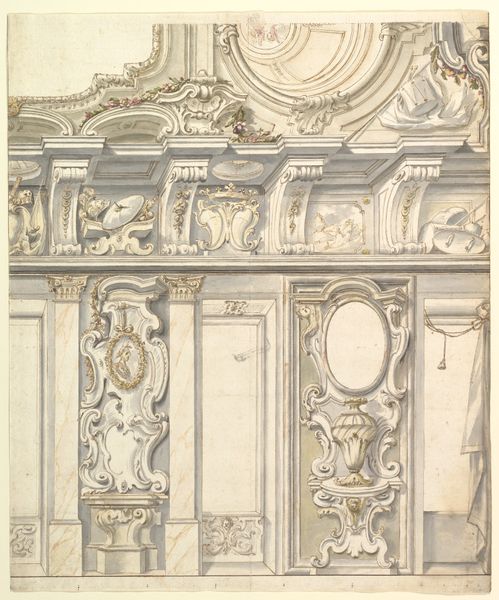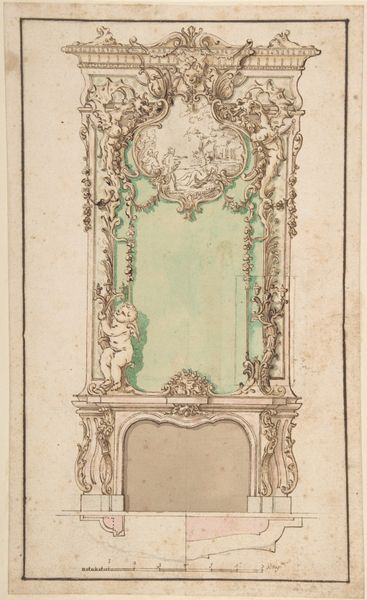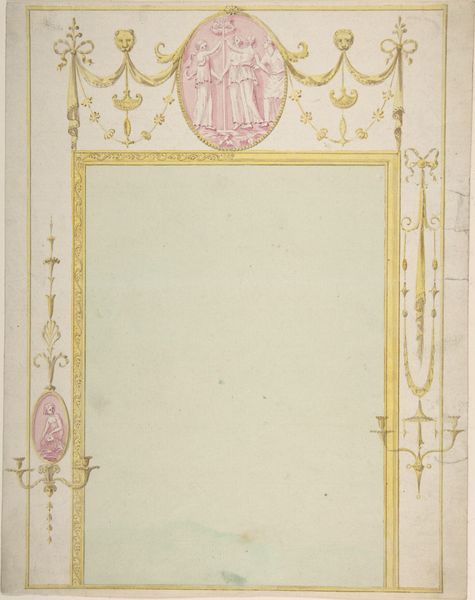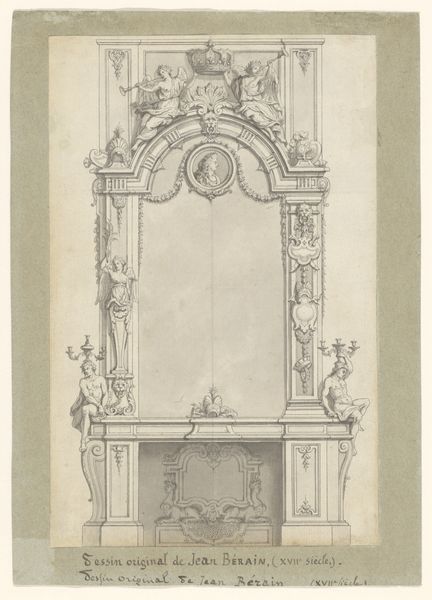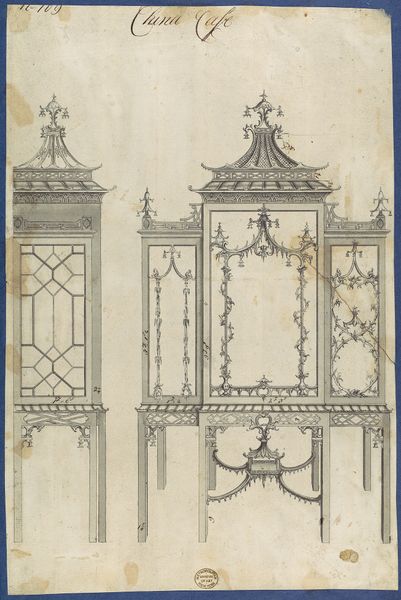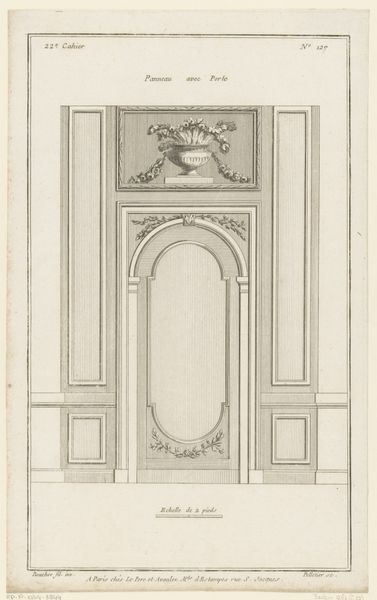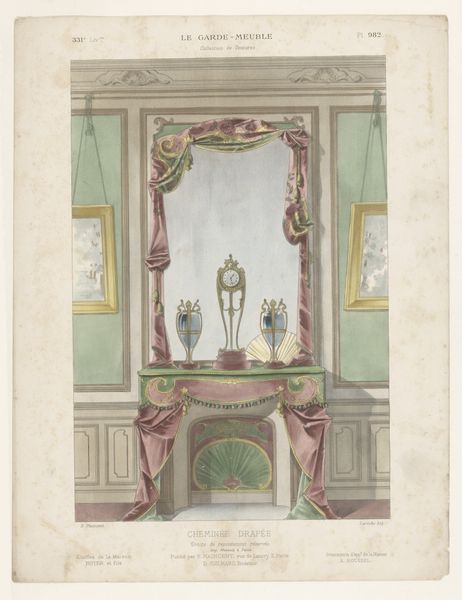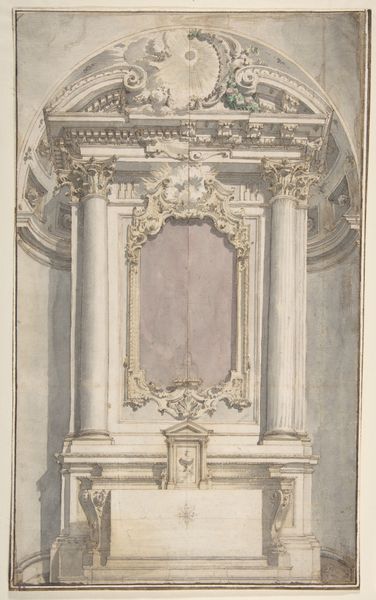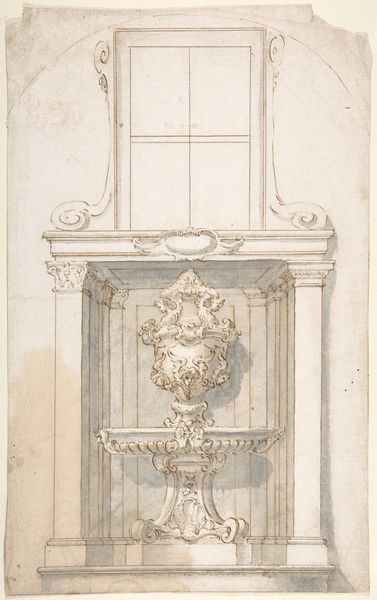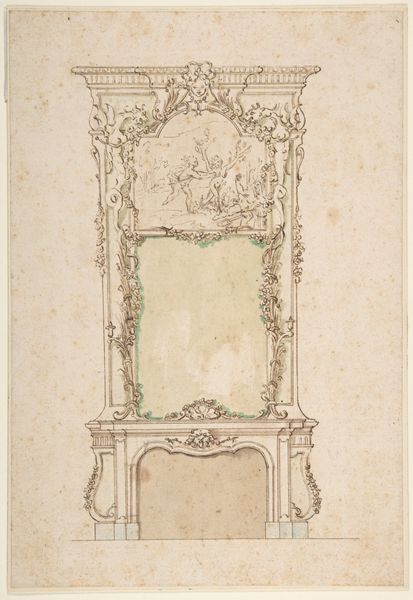
Design for a Wall Decorated with Grotesque 1762 - 1844
0:00
0:00
drawing, print, watercolor
#
drawing
# print
#
figuration
#
form
#
watercolor
#
line
#
academic-art
#
watercolor
Dimensions: 8 x 6-1/16 in. (20.3 x 15.4 cm)
Copyright: Public Domain
Curator: Look at this beautiful drawing, “Design for a Wall Decorated with Grotesque,” by Giuseppe Bernardino Bison, created sometime between 1762 and 1844. It’s currently held at the Metropolitan Museum of Art. Editor: Immediately, I notice how delicate it appears, almost ethereal. The wash of the watercolor lends a faded quality. It feels quite academic in its execution but also ornamental—a confluence I always find intriguing. Curator: The 'grotesque' style itself is interesting. Here we see echoes of ancient Roman art revived during the Renaissance, and how those motifs carried forward, transformed. The hybridity of human, animal, and plant forms is quite evident. Editor: I’m interested in the labor implied. Think about the precise draftsmanship, the time spent rendering each curl of foliage, each little face. And it’s a design—meant for something else, some other hands to execute, presumably on a larger scale and perhaps using different materials. It speaks to a system of artistic production. Curator: Indeed. Consider also the cultural context—the rise of Neoclassicism and the renewed interest in classical forms. How these symbols spoke to ideas of order, harmony, and a return to what was seen as a golden age. Editor: I wonder, looking at the almost staged emptiness of the larger rectangular panel, if this was a presentation piece. Like here is what your design would look like set in space? Because, like, it is so empty. And it is for a "wall decorated" not exactly the other way around... Curator: It is, a dialogue between form and function, between the weight of cultural symbols and the physical act of creation. What meanings would these grotesques hold for the commissioner, or for someone viewing it in a grand salon? Editor: Exactly. The meaning isn't just inherent; it's co-created through the process and the reception. This drawing lets us think through the hands, materials, labor, the time of its making—so much material and societal information from one image. Curator: And that continued transmission of visual culture… what stories did these shapes continue to whisper? Editor: Fascinating indeed. It really is an archive of making processes in an image that initially seems very aestheticized.
Comments
No comments
Be the first to comment and join the conversation on the ultimate creative platform.
